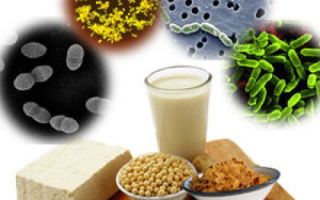Content
- 1 What are Probiotics and Prebiotics in Food
- 2 What is the difference between prebiotics and probiotics
- 3 The benefits and harms of foods containing probiotics and prebiotics
- 4 What foods contain probiotics and prebiotics
- 5 Contraindications to foods rich in probiotics and prebiotics
- 6 Table of Probiotics and Prebiotics in Food
- 7 What foods can replace probiotics and prebiotics
- 8 Rules for the use of foods with probiotics and prebiotics
- 9 Useful Tips
- 10 Conclusion
Foods with prebiotics and probiotics help prevent dysbiosis and its characteristic symptoms. It is known that the intestines of any person include up to 85% of microorganisms belonging to the beneficial microflora. When the balance is disturbed, there is a shift towards an increase in the number of malicious agents.
What are Probiotics and Prebiotics in Food
Violation of the normal intestinal microflora is manifested by heaviness in the stomach, general discomfort, and stool disorder. Dysbiosis or dysbiosis develops due to:
- long-term antibiotic treatment;
- taking acetylsalicylic acid;
- frequent use of laxatives, adsorbents;
- diet disorders;
- formula feeding babies;
- drinking alcohol;
- climate change;
- intestinal infections;
- lingering stress;
- the absence of certain enzymes, both congenital and acquired;
- chronic diseases of the digestive, immune and genitourinary systems;
- surgical interventions.
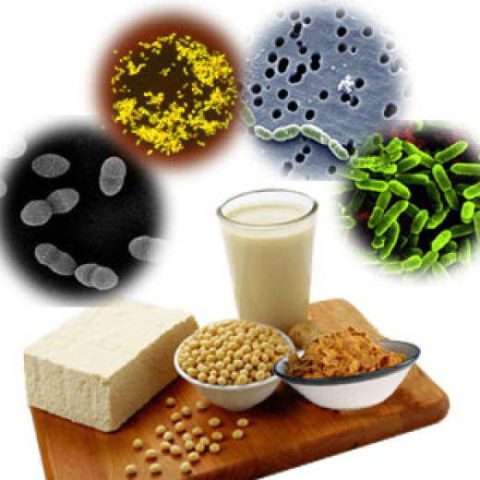
Probiotics include:
- Lactobacillus... They improve the digestion process. These probiotics are characterized by antibacterial activity.
- Bifidobacteria... They are necessary to reduce the absorption of fats, stimulate the immune system, and synthesize certain vitamins.
- Escherichia coli, yeast... Their function is to inhibit the growth of pathogenic flora.
Correction of pathological changes in microflora necessarily includes adherence to a diet. Typically, doctors recommend taking dietary supplements and eating foods that include prebiotics and probiotics.
What is the difference between prebiotics and probiotics
Probiotics mean microbial and other substances, living microorganisms that normalize the composition of microflora when they are introduced in a natural way.
Prebiotics include dietary fiber. These are indigestible components that promote the growth of lactobacilli and bifidobacteria. Prebiotics are called food for beneficial microorganisms.
The benefits and harms of foods containing probiotics and prebiotics
Probiotics are obtained both from drugs and through the use of specific products. In another way, they are called eubiotics. Active reproduction of probiotics inhibits pathogenic and opportunistic flora.
Natural Gut Probiotics in foods help:
- restoration of intestinal microflora;
- increased immunity;
- reducing the frequency of occurrence and exacerbation of allergic reactions;
- normalization of digestion;
- elimination of dyspeptic disorders;
- protection of vessels from atherosclerotic lesions;
- slowing down aging;
- the synthesis of vitamins such as folic acid, B12 and K.
Prebiotics are not absorbed in the gastrointestinal tract. They are food for beneficial bacteria and are of carbohydrate origin. Typically, prebiotics mean fiber.
Eating foods containing these components improves intestinal microbiocenosis and helps to normalize food digestion. Prebiotics and probiotics have a beneficial effect on the functioning of the entire body. This should be taken into account when drawing up a diet.
Prebiotics activate the growth of beneficial microorganisms in the gastrointestinal tract, suppressing the reproduction of harmful flora. Eating the right food helps maintain the right balance.
Among the positive properties of prebiotics are called:
- increased immunity;
- improved absorption of nutrients;
- protection of the heart and blood vessels.
What foods contain probiotics and prebiotics
Beneficial ingredients include not only dietary supplements. Both prebiotics and probiotics are used in the food industry. This is due to their beneficial effects
Probiotic Food List
Gut probiotics are found in the following foods:
- Natural yoghurt... Live bacteria are included in the composition without pasteurization or heat treatment. Experts note that this type of fermented milk products is the optimal source of probiotics: bifidobacteria and lactobacilli. Scientific studies have proven the benefits of yoghurt for strengthening bone tissue, normalizing blood pressure. To lose weight, you must choose a product labeled "Greek".
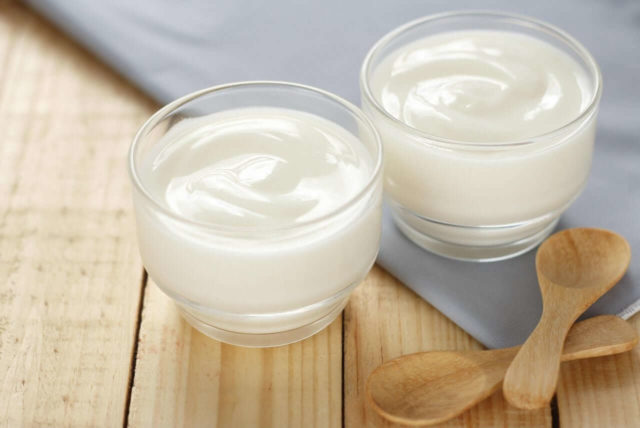 Live bacteria are included in the composition without pasteurization or heat treatment
Live bacteria are included in the composition without pasteurization or heat treatment - Kefir... The beneficial effects of a natural source of probiotics are beyond question. Its use is recommended for pathologies of the digestive system of an infectious nature, for example, travelers' diarrhea. Kefir is distinguished by antibacterial activity, which is more pronounced in relation to pyogenic streptococcus. The natural probiotic in the fermented milk product is useful for chronic gastritis, stomach ulcers by inhibiting the growth of Helicobacter pylori. Kefir increases bone mineral density, accelerates wound healing, and reduces the risk of cancer.
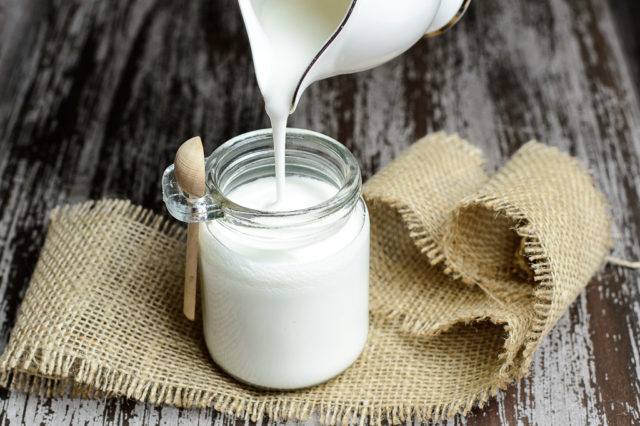 Kefir increases bone mineral density, accelerates wound healing, and reduces the risk of cancer
Kefir increases bone mineral density, accelerates wound healing, and reduces the risk of cancer - Cheese. Probiotics are found in the following types of products: cheddar, gouda, mozzarella. Cheese also provides the body with phosphorus, B vitamins, calcium and protein. The product helps to reduce blood pressure, the risk of heart attack and stroke.
 The product helps to reduce blood pressure, the risk of heart attack and stroke
The product helps to reduce blood pressure, the risk of heart attack and stroke - Sauerkraut... The vegetable is exposed to beneficial bacteria during the cooking process. Sauerkraut is a source of vitamins K, B, C, some macronutrients (selenium, sodium, manganese, iron). Its use has a beneficial effect on the organs of vision due to the content of zaxanthine and lutein. Specialists note anti-cancer and antioxidant properties.
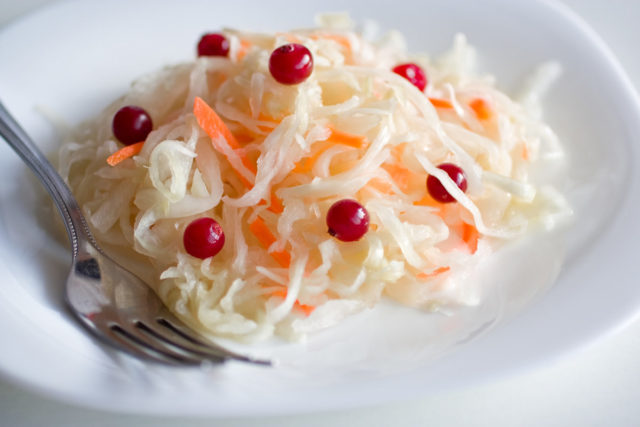 Sauerkraut is exposed to beneficial bacteria during cooking
Sauerkraut is exposed to beneficial bacteria during cooking - Pickles... Foods with probiotics to stimulate the intestines - pickles and other vegetables. They are characterized by low calorie content, the presence of lactobacilli. Pickles have been proven to normalize the lipid profile. However, the benefits of consumption should be expected exclusively in the absence of vinegar in the composition.
 Pickles have been proven to normalize lipid profile
Pickles have been proven to normalize lipid profile - Kombucha (Kombucha). The refreshing sweet drink is popular not only for its taste and the presence of probiotics.It reduces the negative effects of toxic substances, glucose levels, stabilizes the functioning of the pancreas.
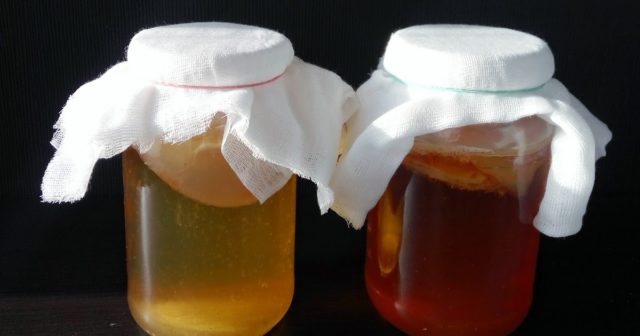 Kombucha Probiotics Promote Healthy Gut Microbiota
Kombucha Probiotics Promote Healthy Gut Microbiota
List of foods with prebiotics
Dietary fiber is needed for the reproduction of beneficial microflora. Eating food containing prebiotics improves the functioning of organs and body systems:
- Chicory root... The product contains 47% fiber. The prebiotic, represented by inulin, has beneficial properties. The extract prevents the development of diabetes mellitus (type 2), improves the absorption of fats, slows down aging. The use of chicory instead of coffee is the prevention of atherosclerosis. Experts note antioxidant and anti-cancer effects.
 Using chicory instead of coffee is the prevention of atherosclerosis.
Using chicory instead of coffee is the prevention of atherosclerosis. - Jerusalem artichoke... The product contains 76% dietary fiber as inulin. Eating a vegetable increases immunity, improves metabolic processes, and reduces the likelihood of type 2 diabetes and fatty hepatosis in the liver. The contained thiamine and potassium have a positive effect on skeletal muscles and nerve impulses.
 Eating Jerusalem artichoke increases immunity, improves metabolic processes, reduces the likelihood of type 2 diabetes and fatty hepatosis in the liver
Eating Jerusalem artichoke increases immunity, improves metabolic processes, reduces the likelihood of type 2 diabetes and fatty hepatosis in the liver - Cocoa... The drink contains flavonoids that stimulate the growth of beneficial intestinal microflora. The consumption of chocolate with a significant cocoa content inhibits the vital activity of fungi. The component has a cardioprotective effect.
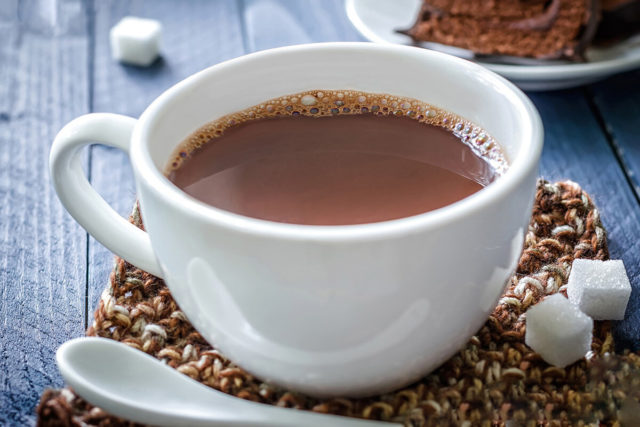 Cocoa has a cardioprotective effect
Cocoa has a cardioprotective effect - Flax seeds... Fiber is a plant fiber (based on mucous gum - 30%, cellulose and lignite - 70%). Flaxseed and oil improve gastrointestinal motility. Nutritionists prescribe the product to reduce the absorption of fat particles. Its use is considered to be the prevention of pathologies of the heart and blood vessels. Prevention of atherosclerosis is essential.
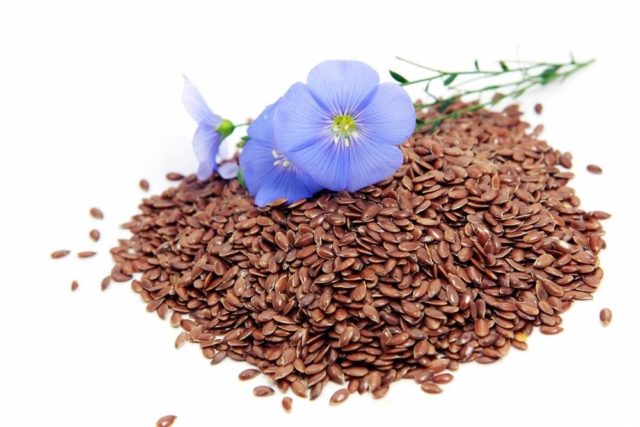 The use of flax seeds is considered the prevention of pathologies of the heart and blood vessels.
The use of flax seeds is considered the prevention of pathologies of the heart and blood vessels.
The following foods contain significant amounts of prebiotics for the reproduction of the appropriate GI organisms:
- beans, peas and other legumes;
- berries, such as strawberries;
- oats;
- asparagus;
- garlic and onions;
- dandelion greens;
- prunes;
- bananas and apples;
- dried apricots;
- zucchini.

Contraindications to foods rich in probiotics and prebiotics
Lactobacillus, PV and bifidobacteria are essential for the body. Probiotics and prebiotics are found in a variety of foods. Their use is not recommended for severe pathologies:
- somatic or infectious diseases;
- suppression of immunity against the background of HIV, long-term antibiotic therapy, the use of glucocorticosteroids.
Table of Probiotics and Prebiotics in Food
The intestinal microflora contains hundreds of millions of beneficial microorganisms. A decrease in their number causes various disorders.
The table reflects information on the presence of probiotics in fermented milk products:
|
Product |
The amount of probiotics in 1 g |
|
Yogurt |
Not less than 1 * 107 |
|
Kefir |
1*107-1*104 |
|
Cottage cheese |
Not less than 1 * 106 |
|
Sour cream |
Not less than 1 * 107 |
The table includes information on the content of prebiotics in food products:
|
Product |
The amount of prebiotics per 100 g |
|
Carrots, pumpkin, turnips, bell peppers, prunes, radish, rye bread, melon |
1-2 g |
|
Cranberries, currants (red and black), garlic, blackberries |
2-3 g |
|
Raspberries, dried apricots, strawberries, dill |
3 g |
|
Black tea |
4.5 g |
|
Oat flour |
7.7 g |
|
Wheat bran |
8.2 g |
|
Oat bran |
14 g |
What foods can replace probiotics and prebiotics
The importance of beneficial microorganisms and fibers is supported by numerous studies. The use of prebiotics and probiotics in the form of food products, dietary supplements improves the functioning of the gastrointestinal tract and heals the body. Experts point to the possibility of preventing cardiovascular and endocrine pathologies. Prebiotics are found in many foods and foods. In another way, they are called dietary fiber.
Rules for the use of foods with probiotics and prebiotics
For these products to be useful, they must meet certain requirements. In particular, probiotics differ:
- lack of toxicity;
- the presence of living cells that resist harmful microflora;
- preservation of the composition during the shelf life.
Useful Tips
When consuming products containing prebiotics and probiotics, their naturalness and shelf life should be considered. The absence of preservatives is essential. You should also take into account possible contraindications in the presence of severe pathologies.
Conclusion
Products with prebiotics and probiotics are necessary to maintain normal microflora of the gastrointestinal tract, prevent and treat pathologies of the immune, cardiovascular, digestive, and endocrine systems. Their use has a positive effect on the state of the body as a whole.

